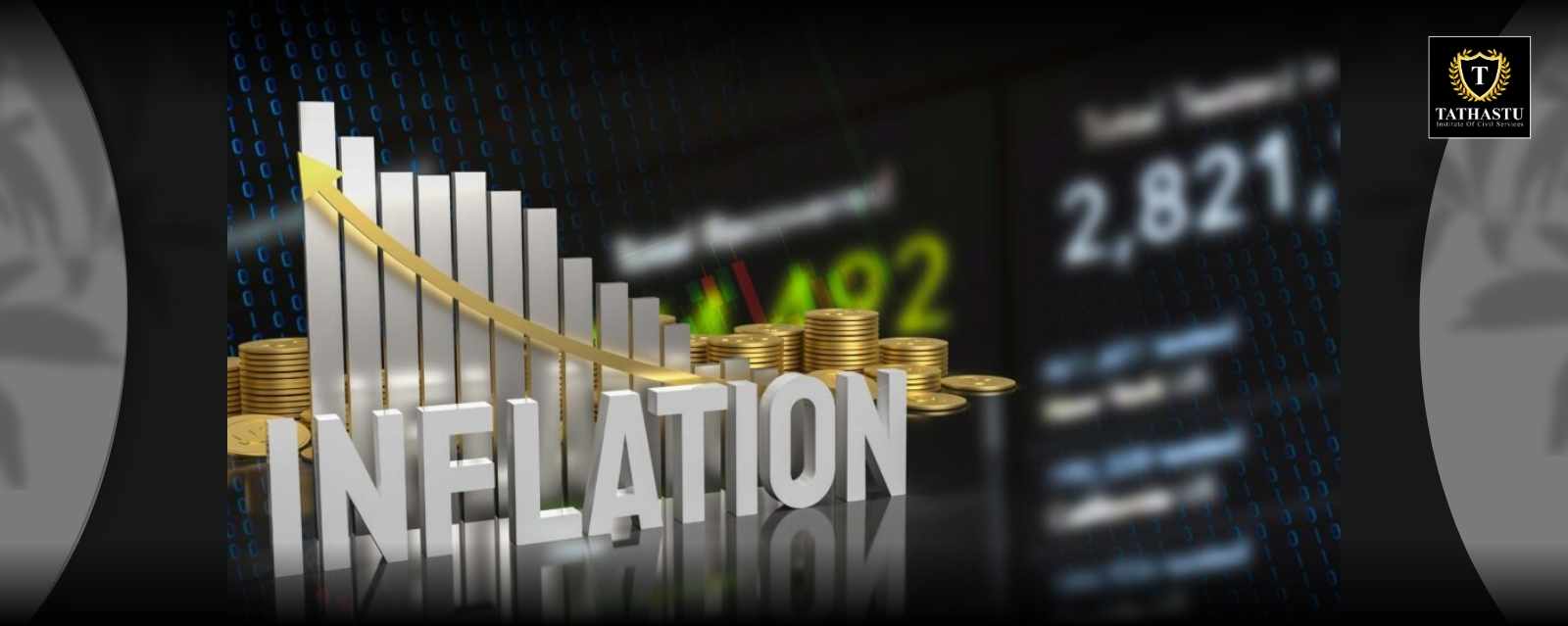Special Batch Available Morning & Evening
Click Here
Inflation is a critical economic concept that affects various aspects of the economy, from individual purchasing power to government policy. A small amount of inflation is considered a sign of a growing economy, but when inflation spirals out of control, it can lead to economic instability.
Inflation can be defined as the continuous rise in prices for the average level of goods and services throughout time in a national economy.
Inflation rates are always calculated at an annual percentage level.
For example, an inflation rate of 5% in April 2023 means that the prices of goods and services have risen by 5% compared to April 2022.
Inflation is measured through the price index to track the continual price variations observed in a collection of essential products along with related services across different periods.
Meaning: The inflation growth of this type occurs slowly thus making it manageable.
It leads to economic growth because it gives reasonable profits that leads to established motivation for new investments among producers along with traders.
Rate: Between 2% and 3% annually
Meaning: Economic struggle can be seen here when inflation shows steady progress.
Proper observation remains essential for such inflation since failure to control it may result in more severe forms of inflation (Running Inflation).
Rate: Between 3% and 10%.
Meaning: Increased costs create challenging situations for businesses while employee earnings fail to meet elevated prices.
It leads to reduced investor confidence, and the economy becomes unstable, thereby leading to the emergence of financial troubles.
Rate: Between 10% and 50%.
Meaning: The rapid deterioration of money value in an economy results in hyperinflation which transforms currency into a useless instrument for common purchase transactions.
For example, high inflation has ruined Zimbabwe and Venezuela in past years which forced both nations to face substantial economic turmoil.
Rate: More than 50% per month.
Under demand pull inflation, aggregate demand grows beyond supply capacity that results in increase in prices.
The price level increases when consumers demand more than manufacturers produces.
When households possess additional disposable money they tend to increase their spending at times.
The rise in production factors' costs (labor, raw materials, capital) makes producers increase product prices for consumers.
Market forces such as increasing wages or rising oil prices normally lead to price increases through cost-push inflation mechanisms.
Unexpected reduction in the availability or the supply of fundamental/essential goods and services causes this type of inflation to emerge.
Natural disasters and pandemics along with geopolitical events, create disruptions which force supply chains to raise their prices.
The economy experiences this type of inflation because of factors that create inefficient conditions, such as poor infrastructure and inefficient supply chains together with insufficient market competition.
Shortages that emerge from structural problems push prices upward.
Protein Inflation
The rapid change in protein food consumption patterns due to increased income levels results in increased prices for protein-based food items, including milk, pulses, meat, and fish.
The Indian economy tracks inflation through:
The Wholesale Price Index tracks the overall price changes that occur on wholesale market levels for commodities.
The Wholesale Price Index includes three primary categories:
Base Year: 2011-12.
|
Note: It does not include services. |
The Consumer Price Index evaluates the changes in prices of goods and services that are being purchased by households.
It provides consumers with a better measure of inflation as it covers the cost of living.
There are various types of CPI:
Producers use the PPI to track the price fluctuations in the goods and services that they produce.
The PPI system tracks prices from the producer's perspective.
The GDP deflator shows the relationship between nominal GDP and real GDP while helping to measure economic inflation throughout the nation.
This indicator includes all products and services produced in a nation for overall inflation measurements.
The effects of inflation can be seen as follows:
Redistribution of Income and Wealth: Borrowers benefit from inflation, as they repay loans with money that is worth less.
On the other hand, lenders lose out because the real value of the money they are repaid is reduced.
Producer vs. Consumer: Producers benefit from rising prices as they can sell goods at higher rates.
However, consumers lose because their purchasing power diminishes.
Fixed-income groups like retirees or daily-wage earners are particularly vulnerable.
Savings and Investment: Inflation erodes the value of money, leading individuals to deposit their savings in banks to protect them from losing value.
However, high inflation can lead to economic instability, discouraging long-term investments.
Balance of Payments (BoP): The nation’s exports suffer due to increased inflationary pressures in the market.
Soaring domestic prices increase the export costs, which produce trade deficits across the balance of payments.
National governments and central banks employ several methods to decrease inflation rates, such as:
Monetary Measures: By adjusting interest rates and cutting down money supply, central banks have the power to regulate inflation.
Higher interest rates minimize borrowing activities and spending, which reduces consumer demand and keeps inflation under control.
Fiscal Measures: Public expenditure needs to be reduced, and tax rates should increase to lower market demand throughout the economy.
Governments can reduce inflation through the use of subsidy cuts for essential products as a financial policy instrument.
Trade Measures: Through increased imports of essential goods, the government can reduce the supply shortage and lower prices in the market.
Using such measures would combat inflation which stems from supply disruptions.
Administrative Measures: Price controls, rationing and wage policies help manage inflationary pressures.
Economic policymakers shall manage the multiple factors of inflation because uncontrolled inflation creates negative impacts on the economy. Mild inflation helps stimulate economic growth, yet unchecked inflation causes economic disorder.